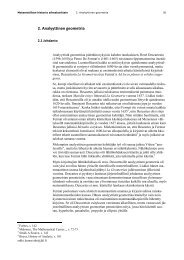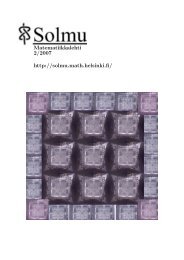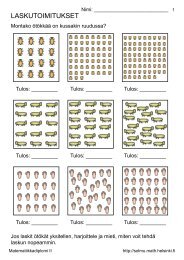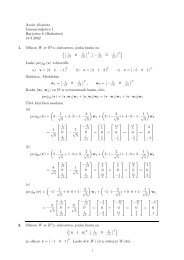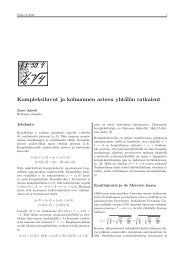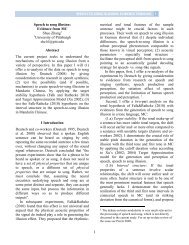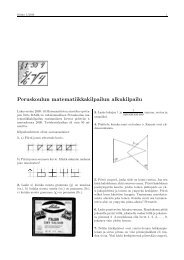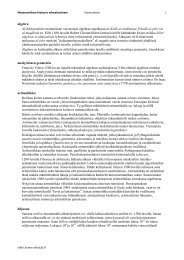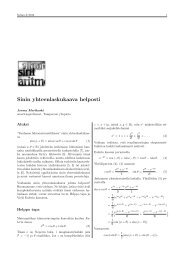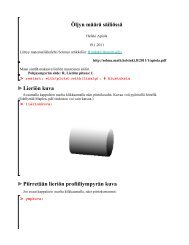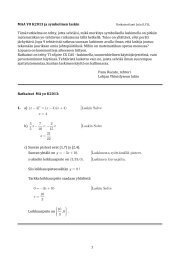Non-Newtonian turbulence: viscoelastic fluids and binary mixtures.
Non-Newtonian turbulence: viscoelastic fluids and binary mixtures.
Non-Newtonian turbulence: viscoelastic fluids and binary mixtures.
You also want an ePaper? Increase the reach of your titles
YUMPU automatically turns print PDFs into web optimized ePapers that Google loves.
2.1. Polymer dynamics in <strong>fluids</strong> 35<br />
Figure 2.3: Single DNA molecule (40µm) relaxing to the coiled state. In this<br />
experiment a latex bead (1µm) is tethered to an end of the molecule. The DNA,<br />
coloured with a fluorescent dye, is stretched by a uniform flow <strong>and</strong> successively<br />
let free to relax. Images are taken at 5s time intervals, from left to right [34].<br />
where µ is the dynamic viscosity of the solvent. Experiments with DNA molecules<br />
[34] confirm that relaxation can be safely considered linear, provided the elongation<br />
is small compared to the maximum extension R ≪ Rmax (see fig. 2.3).<br />
Actually, the relaxation process can be much more complex than the simple<br />
description of Zimm model. Several microscopic models of polymeric dynamics<br />
have been developed to characterize this process. An introduction to this subject<br />
can be found in the book by Doi <strong>and</strong> Edwards [35]. Nevertheless, the simple linear<br />
relaxation is able to catch, at least qualitatively, the basic features of polymer<br />
dynamics in <strong>fluids</strong>.<br />
Finally, let us mention that the description of a polymer as a freely jointed<br />
chain does not consider excluded-volume effects, which are experimentally known<br />
to alter the scaling R0 ∼ M 1/2 of the gyration radius with the degree of polymerization.<br />
The scaling exponent is, indeed, found to be ν = (0.55 ÷0.6). The origin<br />
of these effects is the possibility that segments of the chain have, in the model, to<br />
intersect or superpose to each other, which is not realistic. A better approximation<br />
of the chain dynamics is based on a self-avoiding r<strong>and</strong>om walk. While the theory<br />
of the st<strong>and</strong>ard r<strong>and</strong>om walk is quite simple, the treatment of the self-avoiding<br />
problem is more difficult. A theoretical estimation of ν has been given by Flory<br />
[36] for spatial dimensionality d < 4:<br />
ν = 3<br />
d + 2<br />
(2.11)<br />
which, for d = 3, gives the value ν = 3/5 = 0.6, not far from the experimental<br />
measures; in two dimensions, Flory’s result is exact. When d ≥ 4 the value<br />
ν = 1/2 of the ideal chain is recovered, meaning that the segments have "enough<br />
room" to avoid each other.<br />
35



